Imagine running an e-commerce platform and integrating an e-commerce plugin that automatically records sales from your website as deals in HubSpot. Calculating a customer’s lifetime value, or the total number of transactions, becomes crucial for nurturing that relationship and maximizing their value to your business.
Similarly, understanding the total lifetime donations from supporters for non-profits can significantly impact how you engage with and recognize your donors.
In digital marketing and managing customer relationships, it’s really important to grasp how deep and valuable your interactions are with people or businesses. This insight helps you make smart choices and customize how you meet your customer’s needs more effectively.
HubSpot’s calculated properties feature offers a powerful tool for businesses to mine valuable insights from their data, especially for those interested in tracking the number of deals associated with a specific contact or company or quantifying the revenue generated from a particular company.
In this blog, we will explore everything about HubSpot calculated properties and how they can streamline your data analysis, enhance decision-making processes, and propel your business forward.
What are Calculated Properties in HubSpot?
Calculated properties in HubSpot are custom fields that perform calculations on other property values within your HubSpot database. These calculations can be based on data from contacts, companies, deals, or tickets, allowing you to automate complex computations that would otherwise require manual effort or external tools. Calculated properties can handle a wide array of data processing tasks, from simple arithmetic to more complex formulas involving dates and text manipulation.
How Can HubSpot’s Calculated Properties Help?
HubSpot’s calculated properties allow you to perform dynamic calculations based on the data within your CRM. This functionality can be leveraged in several ways:
- Tracking Deal Counts
By creating a calculated property, you can easily track how many deals are associated with a particular contact or company. This information can be invaluable for sales teams to identify and prioritize high-engagement contacts or companies.
- Measuring Revenue from Companies
Another calculated property can sum up the revenue generated from deals associated with a specific company. This metric is crucial for understanding which partnerships or client relationships are most lucrative and worth further investment.
- Calculating Customer Lifetime Value
For e-commerce businesses, calculating a customer’s LTV is essential for assessing the long-term value of customer relationships. By summing up all sales associated with a customer’s contact record in HubSpot, you can gain insights into their buying behavior and overall value to your business.
- Total Number of Transactions
Knowing a customer’s total number of transactions can help e-commerce sites tailor their marketing efforts, offer personalized discounts, or reward loyalty.
- Total Lifetime Donations for Non-Profits
Non-profits can use calculated properties to track the total donations made by a supporter over time, aiding in developing targeted engagement strategies and recognition programs.
How Can You Create Calculated Properties?
HubSpot’s calculated properties provide large benefits, from automating complex calculations to providing deeper insights into customer behavior. Below is a step-by-step guide on how to create these calculated properties.
- Access the Properties Settings
Navigate to your HubSpot account settings and find the section dedicated to properties (usually under “Properties” in the “Data Management” category).
- Create a New Property
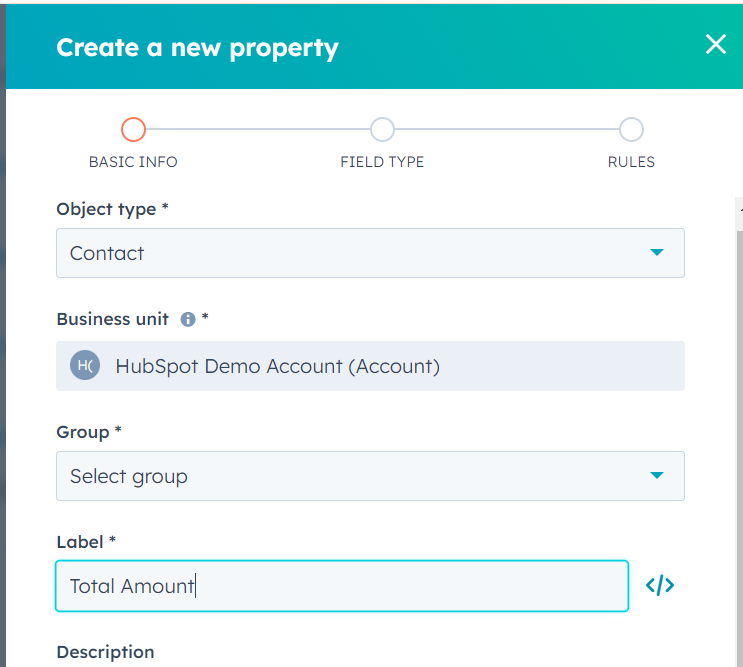
Choose the option to create a new property, and select the object type (contact, company, deal, or ticket) for which you want to make the calculated property.
- Select the Calculation Option
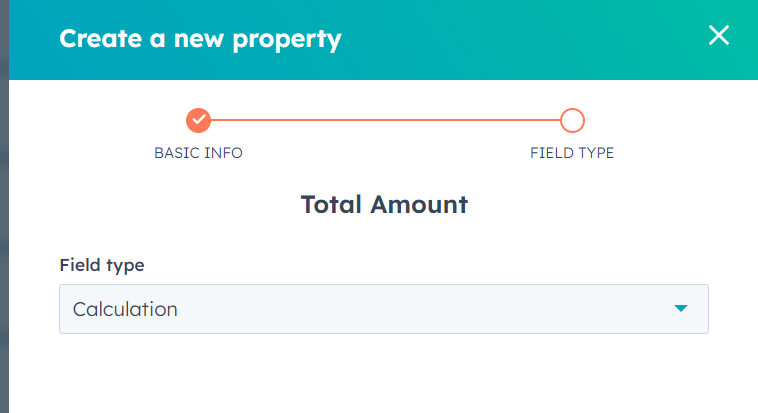
The “Calculated” option is among the property types. Selecting this option allows you to define the formula for your calculation.
- Define the Formula
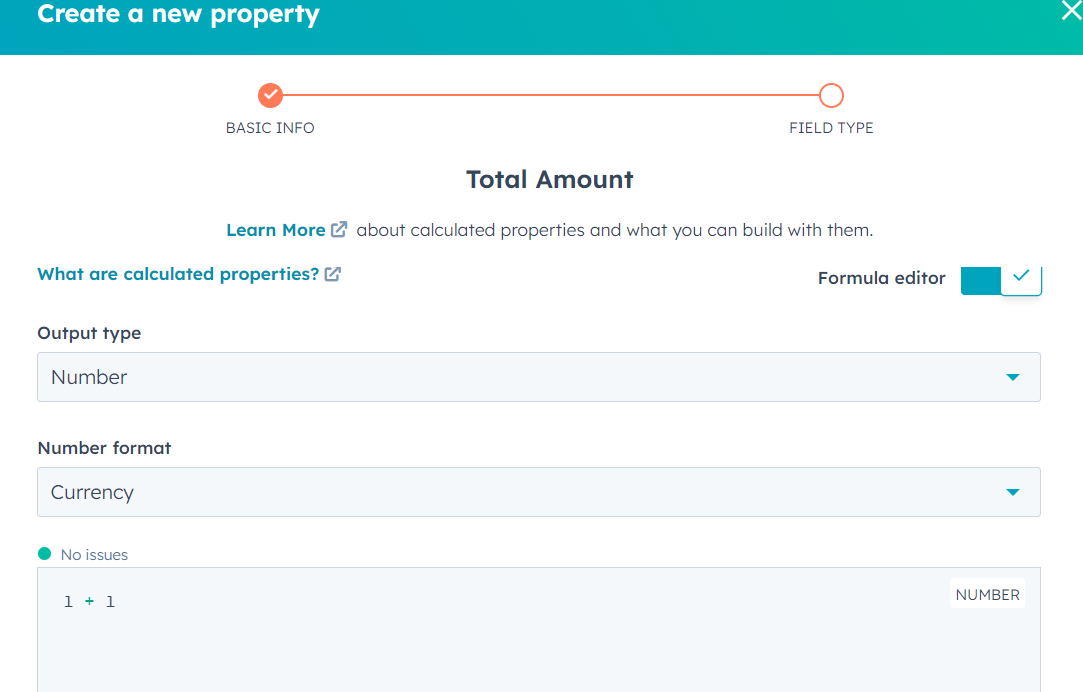
Use the formula editor to specify the calculation you want to perform. HubSpot provides various functions and operators, enabling you to create simple and complex formulas.
- Save and Apply
Save the new property once your formula is set. It will automatically update based on the data in your HubSpot account, ensuring your calculations are always current.
Calculating Values Based on Time Between Two Properties in HubSpot
Calculating the time between two dates in HubSpot can provide valuable insights into your business processes, such as understanding the sales cycle length or measuring the time between a customer’s first contact and their first purchase. This step-by-step guide will walk you through creating a calculation property in HubSpot to measure the time between two date properties.
Introduction to Time-Based Calculations
Time-based calculations in HubSpot allow you to measure intervals between two dates, offering a clear view of time-related metrics within your CRM. Calculating the time between two properties is a straightforward yet powerful tool for optimizing your sales process, improving customer service, or understanding your business operations better.
- Log into your HubSpot account. Click on the settings icon in the main navigation bar to access your settings.
- In the left sidebar menu, find and click on “Properties.” This section allows you to manage and create new properties for different objects in your account.
- Click the “Select an object” dropdown menu. Choose the object you want to create a property for (e.g., Contacts, Companies, Deals). This selection determines which type of record the calculation will apply to.
- Enter the necessary information for your new property, such as the name and description. Click “Next” to proceed.
- Choose Field Type. For the field type, select “Calculation.” This indicates that the property will be calculated based on other property values. You cannot change its field type once you create a Calculation property.
- Click on “Build calculation” to define the specifics of your calculation.
- From the “Calculated property type” dropdown menu, choose “Time between.” This option calculates the duration between two date picker properties within the same object.
- You must select the two date properties to calculate the time between. These properties must be date picker fields associated with the object you selected earlier.
- After selecting your date properties, decide how you want the time displayed (e.g., in days, weeks, months). This choice will affect how the calculated time interval is presented.
- Review your settings to ensure everything is correct. Click “Create” to finalize the creation of your new calculated property.
This functionality enhances your ability to track and analyze critical time-based metrics and empowers you to make data-driven decisions to improve your business operations. Remember, the clarity and insights gained from understanding these time intervals can significantly impact your strategic planning and customer engagement efforts.
The Various Applications of Calculated Properties
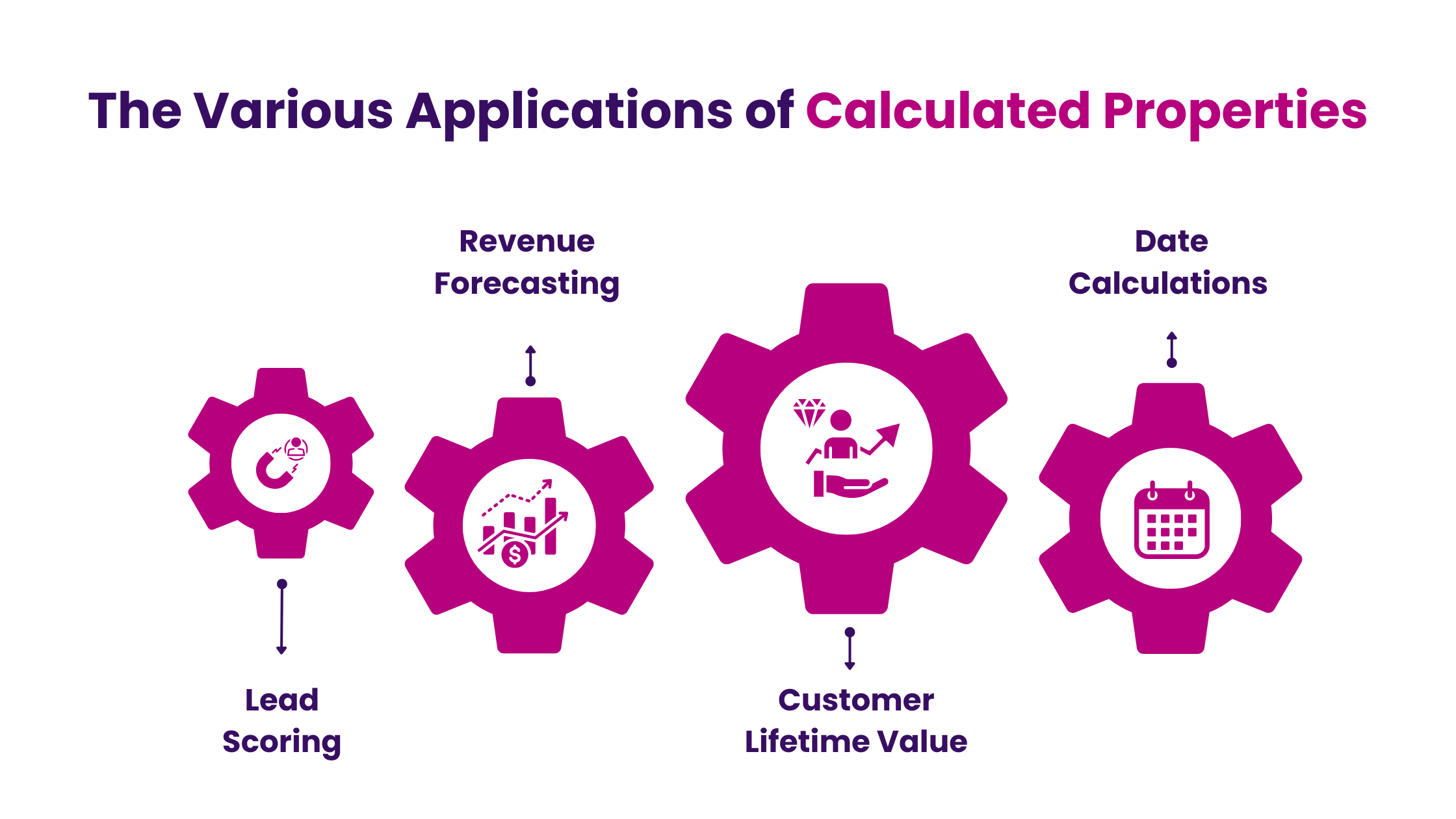
Calculated properties in HubSpot offer a dynamic and powerful way to derive actionable insights from your CRM data, enabling more informed decision-making across various aspects of your business.
By leveraging these properties, you can automate complex calculations that would otherwise require manual effort or external tools, thus enhancing efficiency and accuracy. Below, we explore several practical applications of calculated properties, illustrating how they can drive business growth and improve customer relationships.
- Lead Scoring
Lead scoring is a methodology used to rank prospects against a scale representing each lead’s perceived value to the organization. By calculating custom lead scores based on various contact properties, businesses can prioritize leads more effectively, focusing their efforts on those most likely to convert.
Consider a scenario where you assign points to different engagement activities: 10 points for email opens, 20 points for website visits, and 30 points for form submissions. You can sum these points using a calculated property to create a comprehensive lead score for each contact. This score helps sales teams identify high-priority leads who are more engaged and potentially closer to making a purchase.
- Revenue Forecasting
Revenue forecasting is crucial for business planning and strategy development. Using deal properties to calculate expected revenue, you can consider various factors, such as deal stage probabilities and close dates, providing a more accurate picture of future income.
Imagine you have deals at different stages in your sales pipeline, each with an associated probability of closing (e.g., Qualified to Buy: 50%, Presentation Scheduled: 70%). You can create a calculated property that multiplies the deal amount by the closing probability to forecast revenue for each deal. Summing these values across all deals gives you an overall revenue forecast, helping you make informed budgeting and resource allocation decisions.
- Customer Lifetime Value
Understanding the lifetime value of your customers is essential for assessing the long-term profitability of your business relationships. By combining transactional data and engagement metrics, you can estimate the CLV, guiding marketing spend and customer service efforts.
To calculate CLV, consider the average purchase value, purchase frequency, and customer lifespan. For instance, if a customer makes an average purchase of $100 every three months over three years, their CLV would be calculated as $100 x 4 purchases/year x 3 years = $1,200. This calculation can be automated through a calculated property, enabling you to segment customers based on their value and tailor your engagement strategies accordingly.
- Date Calculations
This can be useful for managing contracts, subscriptions, and customer relationships. You can trigger timely actions and communications by calculating the number of days until a contract expires or the age of a lead.
Suppose you have a contract expiration date property. In that case, you can create a calculated property to determine the number of days until expiration by subtracting the current date from the expiration date. This allows you to automate reminders for contract renewals or follow-ups. Similarly, calculating a lead’s age from their birthdate can help personalize marketing messages or offers.
The applications of calculated properties in HubSpot are limited only by your imagination and business needs. By integrating calculated properties into your HubSpot strategy, you can unlock new efficiencies and deepen your understanding of your business and customers.
Best Practices for Using Calculated Properties

To make the most out of calculated properties, consider the following best practices to harness the full potential of calculated properties within HubSpot; adhering to certain best practices can significantly enhance their effectiveness and ensure they continue to serve your business objectives efficiently. Here’s a deeper look into the key strategies for optimizing the use of calculated properties:
- Clearly Define Your Goals
Before creating calculated properties, you must clearly understand what you aim to achieve. Whether you’re improving lead qualification processes, forecasting revenue more accurately, or understanding customer behavior better, having well-defined goals will guide the development of your calculations. Each calculated property should serve a specific purpose that aligns with your broader business objectives.
For instance, if your goal is to enhance lead prioritization, your calculated property might focus on scoring leads based on engagement and demographic information. This direct alignment ensures that your insights are relevant and actionable.
- Keep Formulas Simple
Complex formulas can be powerful, but they also come with increased risks of errors and misunderstandings. A simple, well-constructed formula is easier to troubleshoot, understand, and explain to others within your organization. It ensures that the data you rely on for decision-making is accurate and reliable.
Simple formulas facilitate easier updates and adjustments over time. They allow quick modifications without extensive debugging or validation, which is especially valuable in dynamic business environments where agility is key.
- Regularly Review and Update
As your business grows and evolves, so will your data analysis needs. What was relevant six months ago may not be as pertinent today. Regularly reviewing your calculated properties ensures they continue to meet your current business requirements and provide meaningful insights.
Regular updates allow for incorporating feedback from data users. Sales teams, marketing professionals, and customer service representatives can offer valuable insights into how calculated properties impact their work and suggest improvements. This feedback loop is essential for continuous improvement and alignment with user needs.
HubSpot’s calculated properties offer a robust tool for businesses to derive actionable insights from their CRM data, enhancing decision-making across various operations. Setting clear goals, maintaining simplicity in formulas, and regularly reviewing and updating calculations to ensure they remain relevant and aligned with business objectives to maximize their benefits is crucial. Embracing these practices will empower businesses to utilize their data fully, driving growth and improving customer relationships.
Unlock Your Business Potential With Expert HubSpot Support!
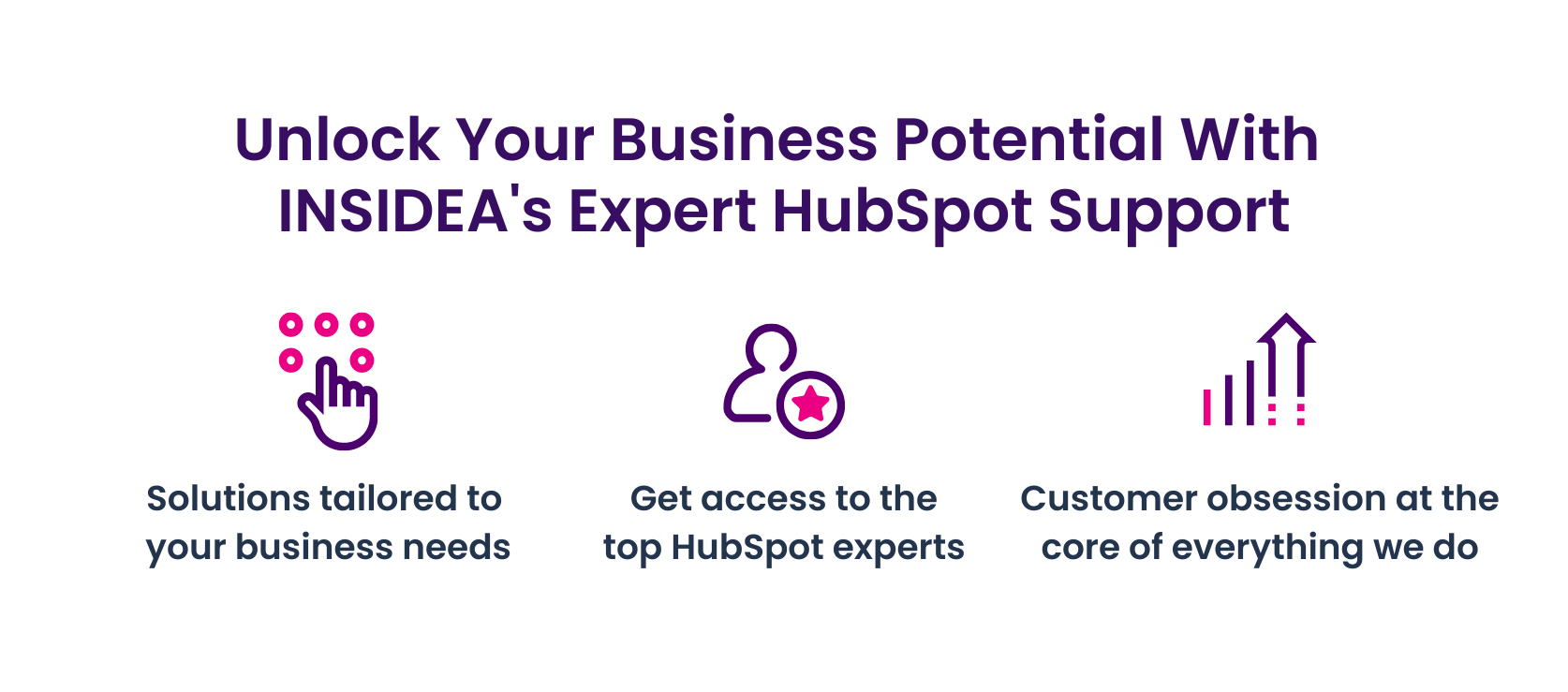
As a HubSpot Diamond Solutions Partner we take pride in assisting you with streamlining your HubSpot efforts. With our best-in-class marketing, sales, and service solutions, we help you scale exponentially. INSIDEA’s HubSpot Specialists have the required in-depth knowledge and can provide expert guidance on how to use the platform to meet your business needs.
Get in touch today to learn more about how INSIDEA can help you succeed!
- Tailored Experience: For us, user experience is the primary focus. Thus, INSIDEA works with you to ensure your HubSpot experience is tailored to your business needs.
- Industry Expertise: Our team specializes in the setup, implementation, and optimization of HubSpot tools, as well as being well-versed in HubSpot best practices to ensure your business has the highest ROI possible.
- Customer Obsession: For us, customer satisfaction is the key to success, and we strive to ensure that our customers’ needs are met and exceeded every time.
At INSIDEA, we understand the importance of valuable HubSpot strategies that understand your target audience and drive conversions. Book a meeting with our HubSpot experts to explore how we can help you with your upcoming projects.
Get started now!







































